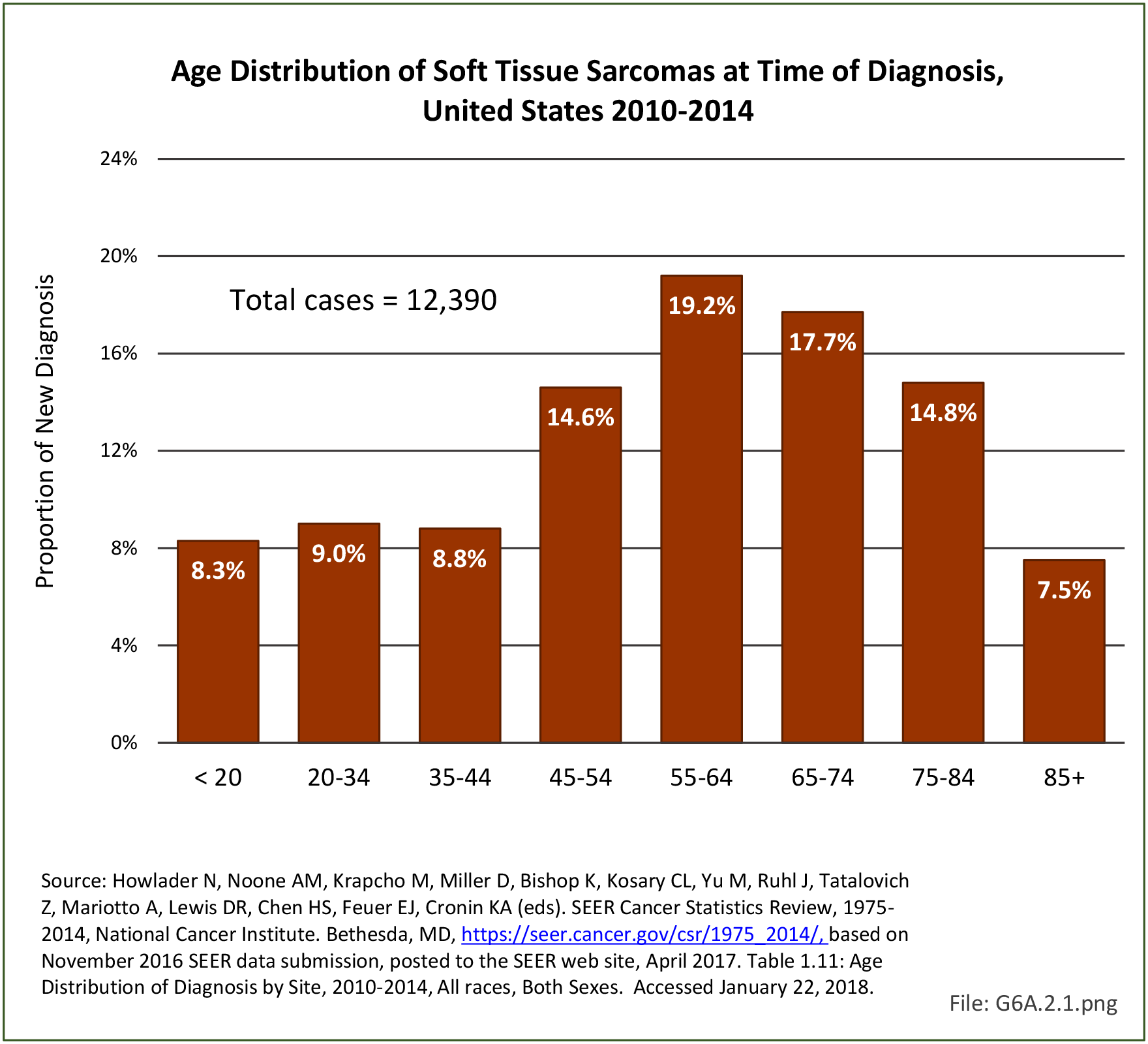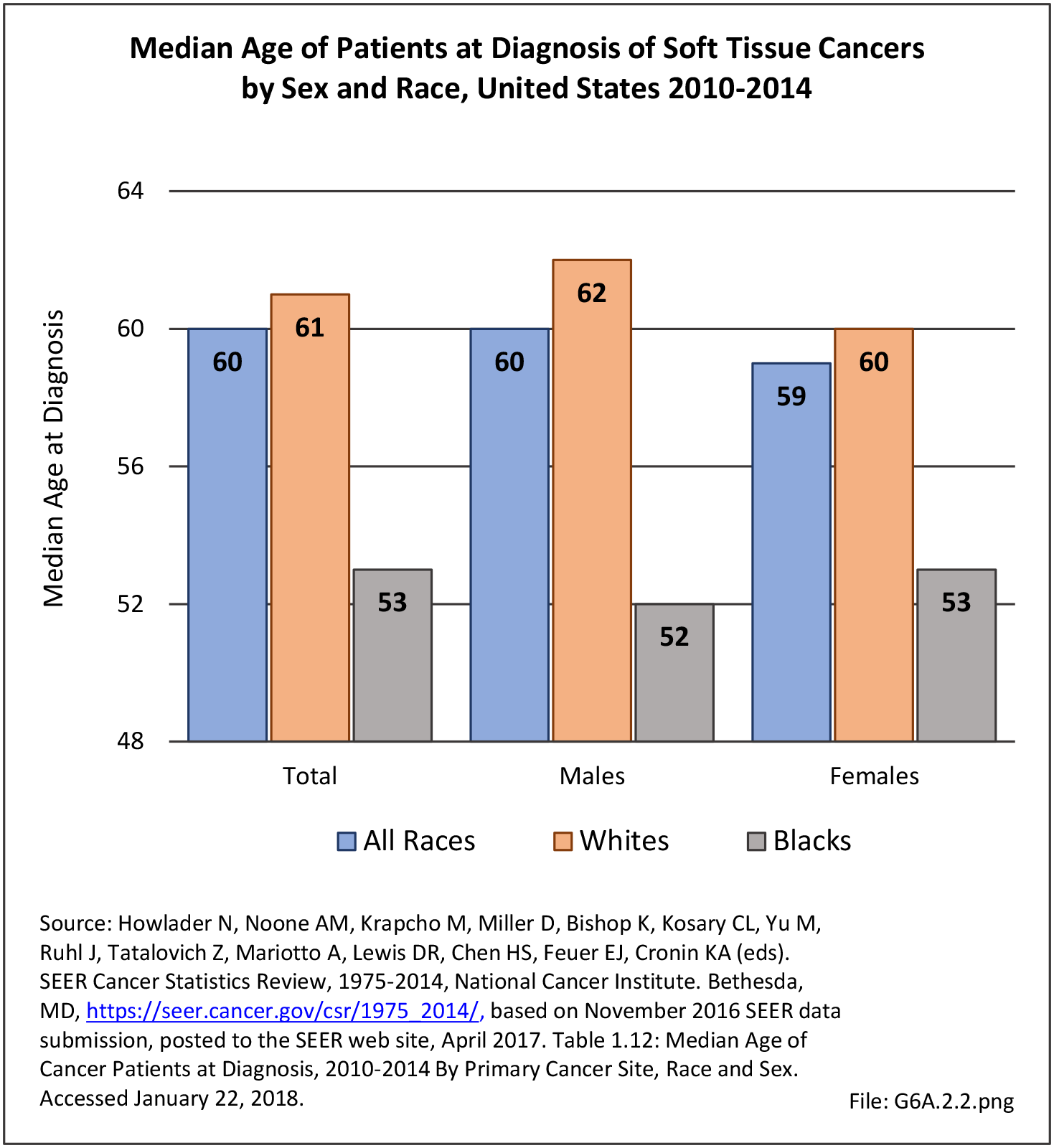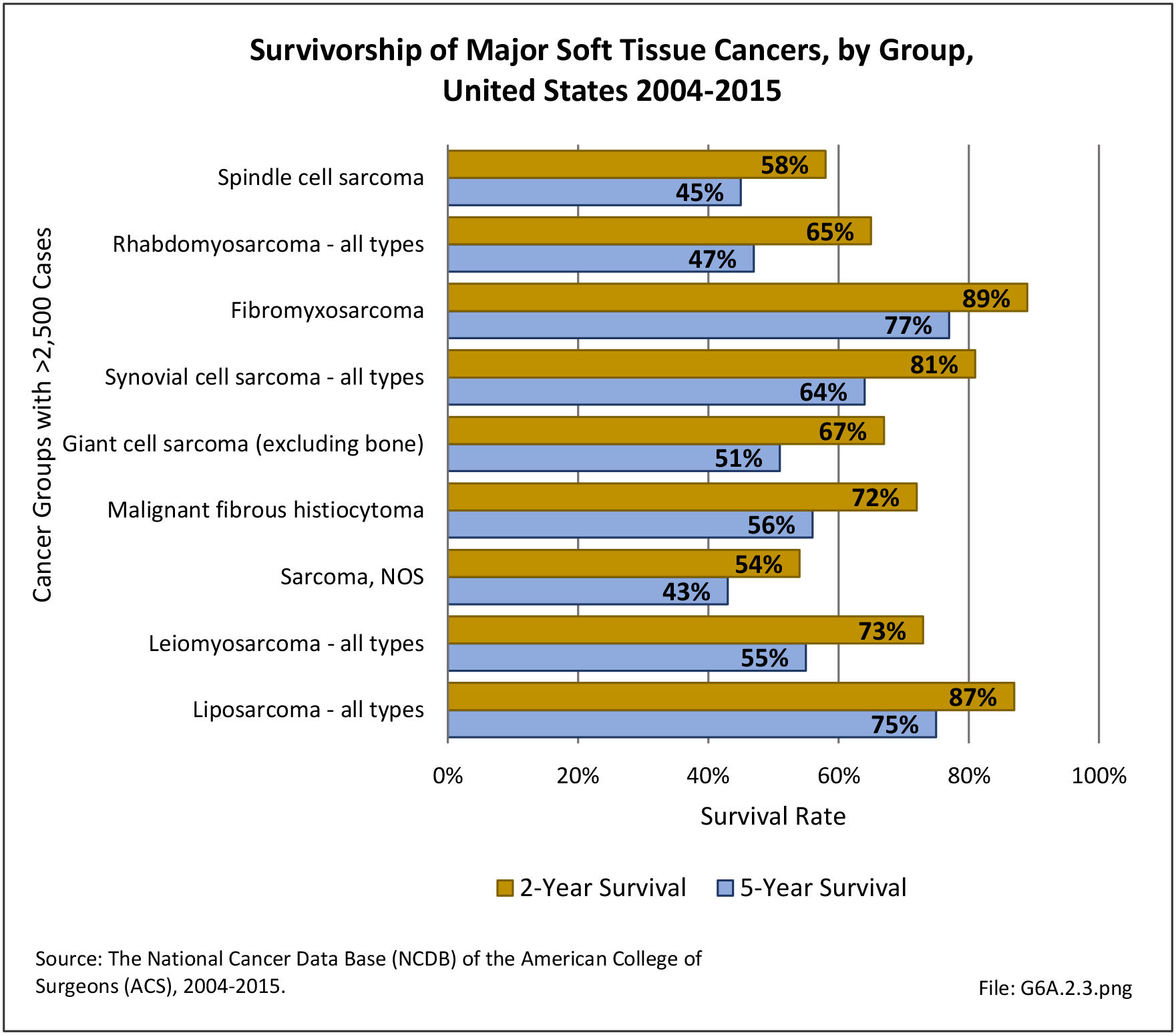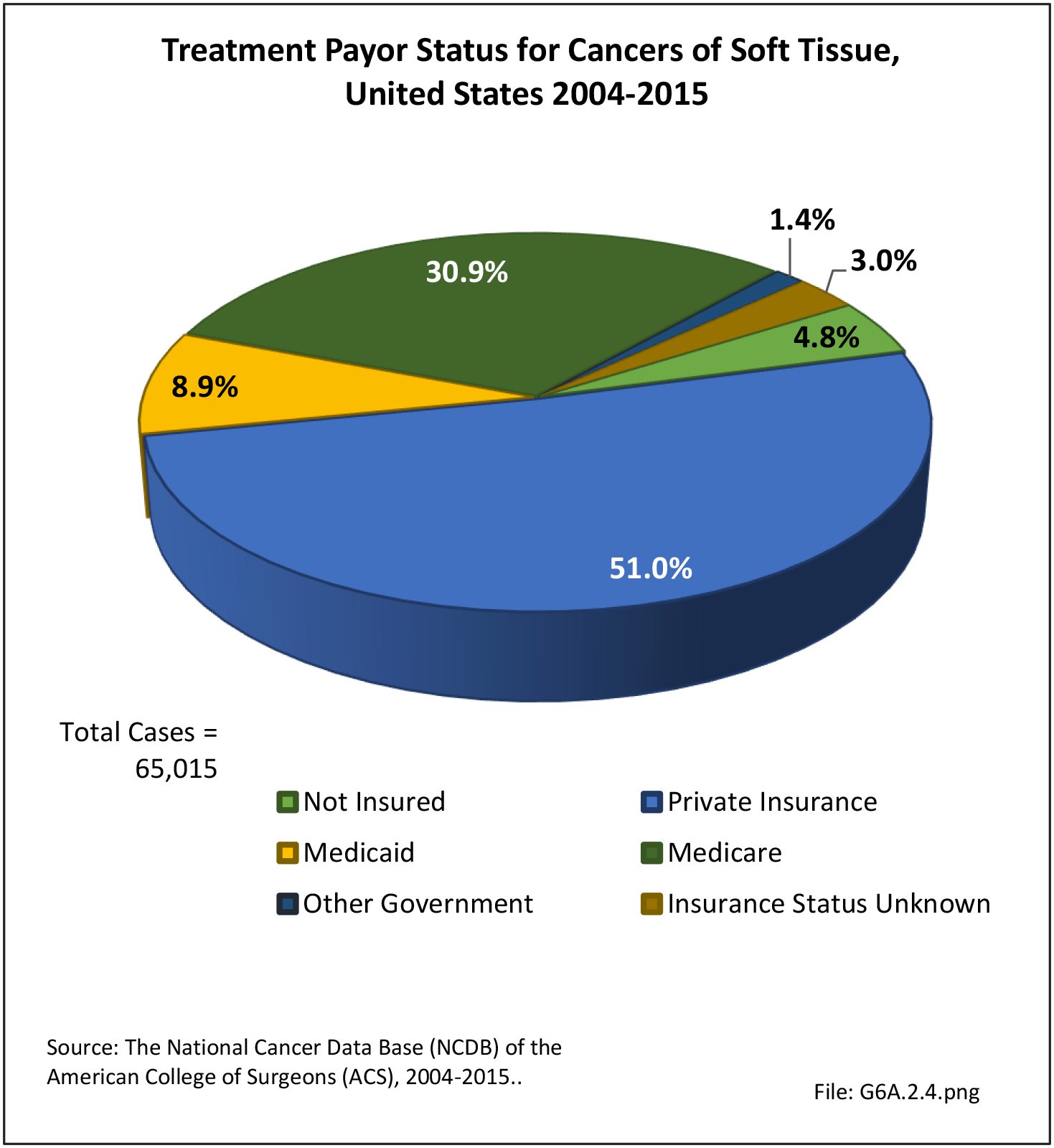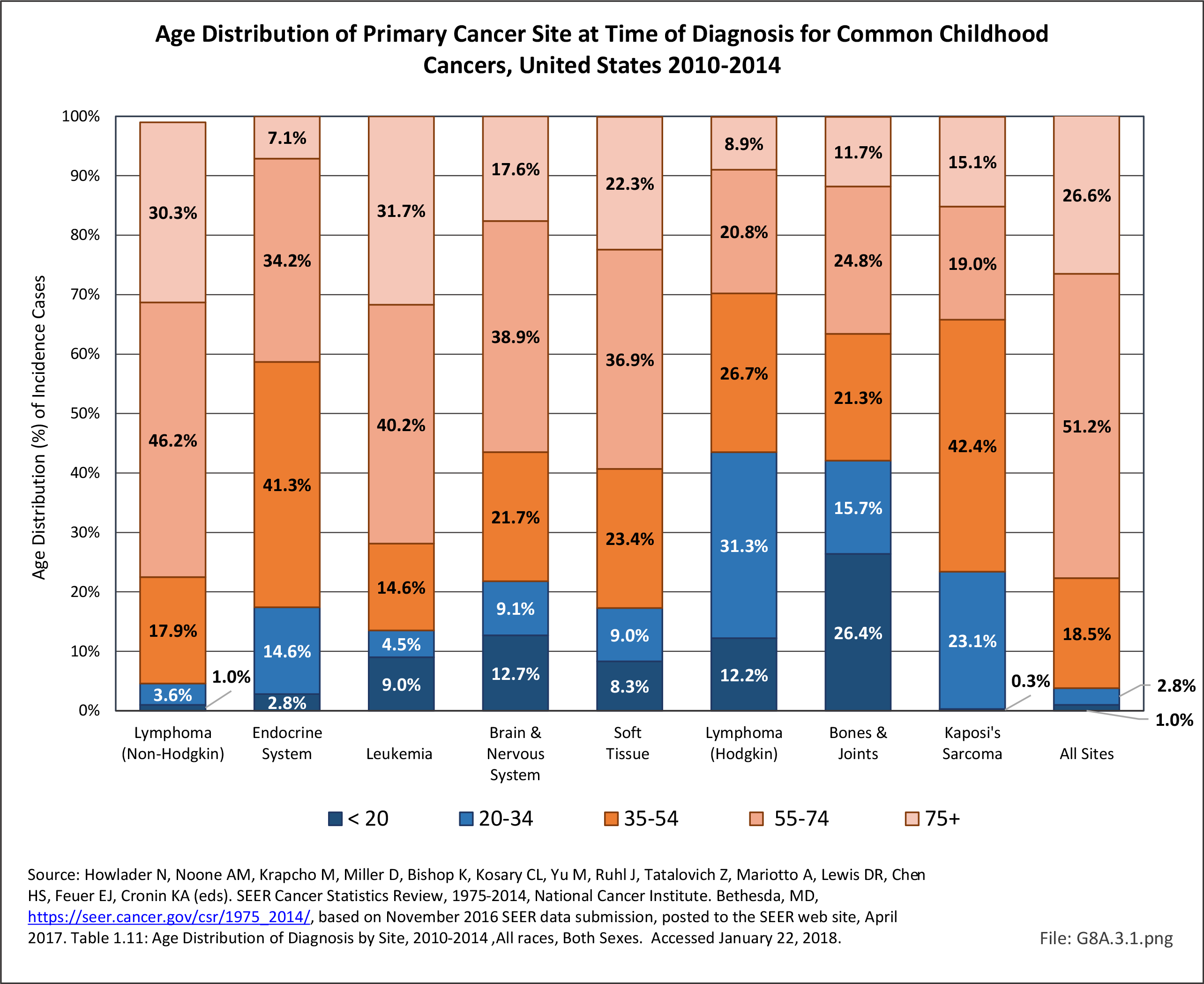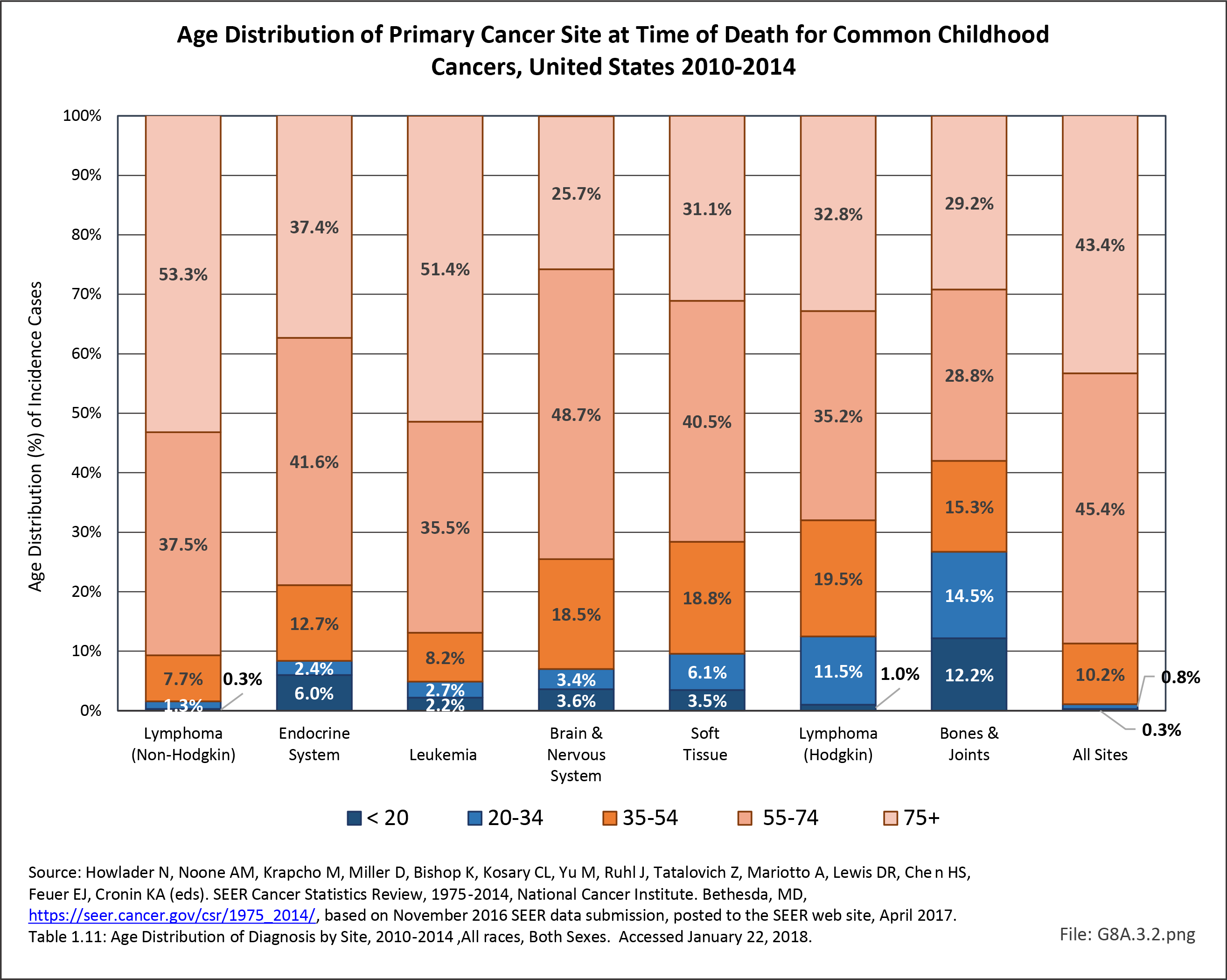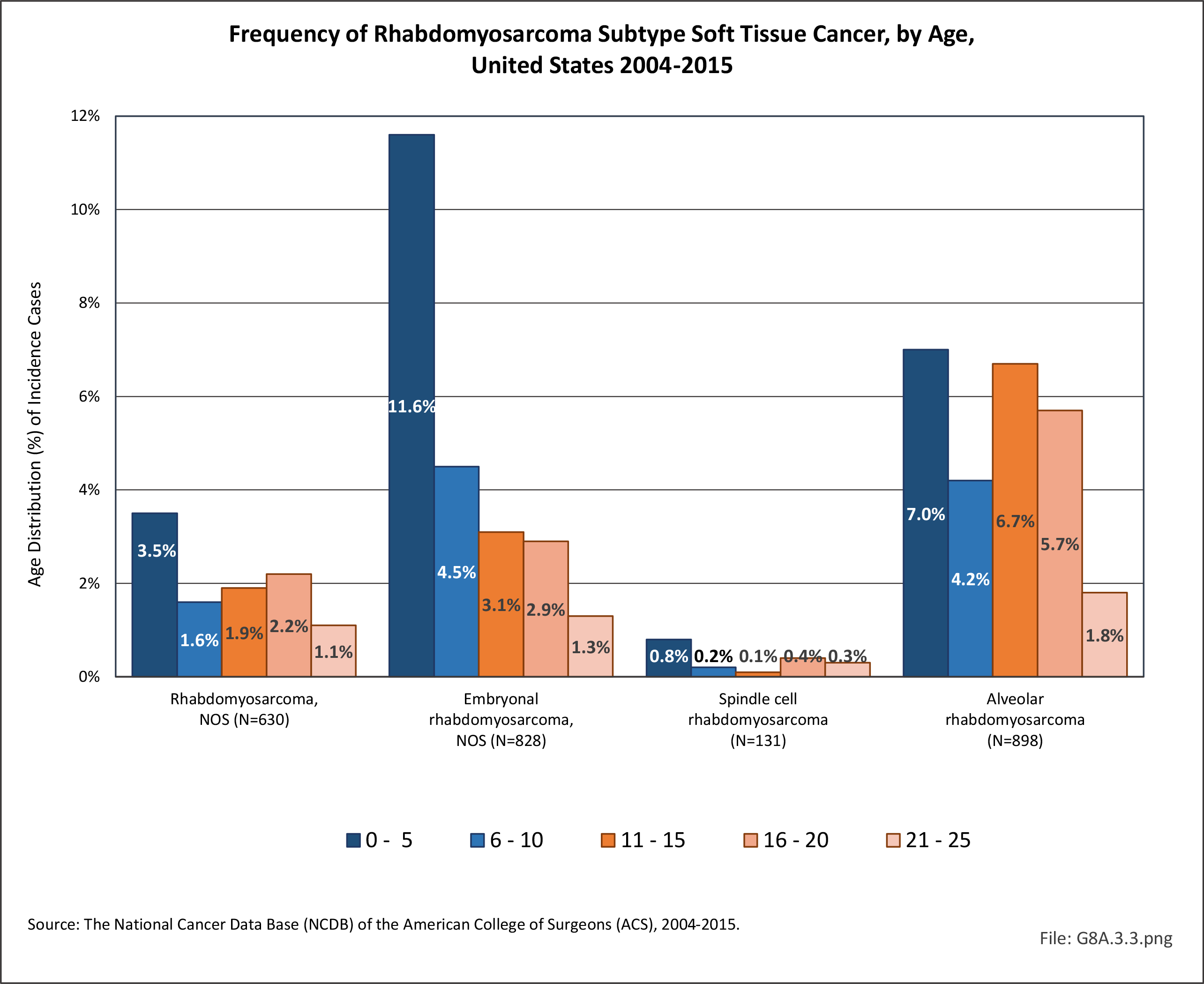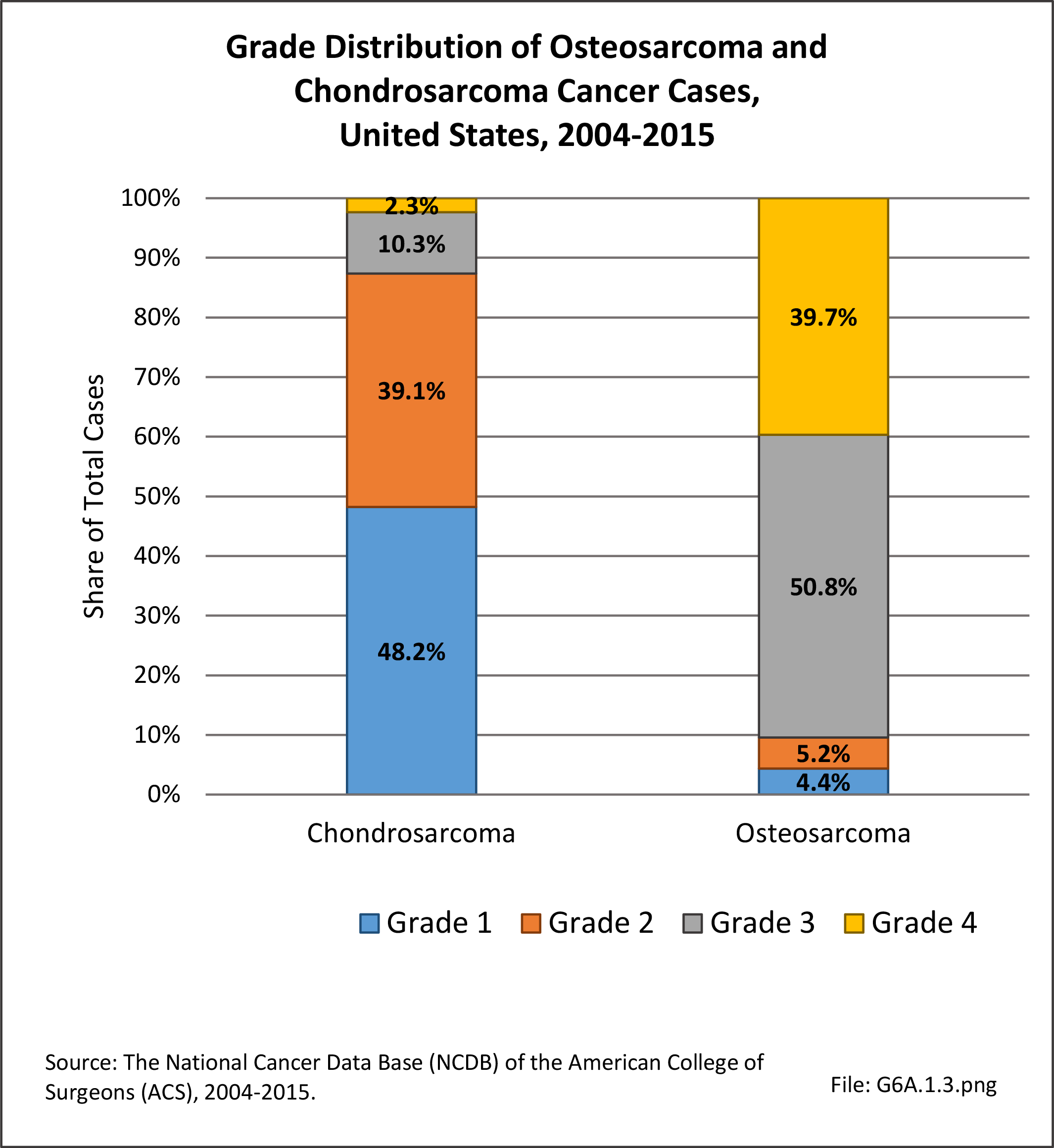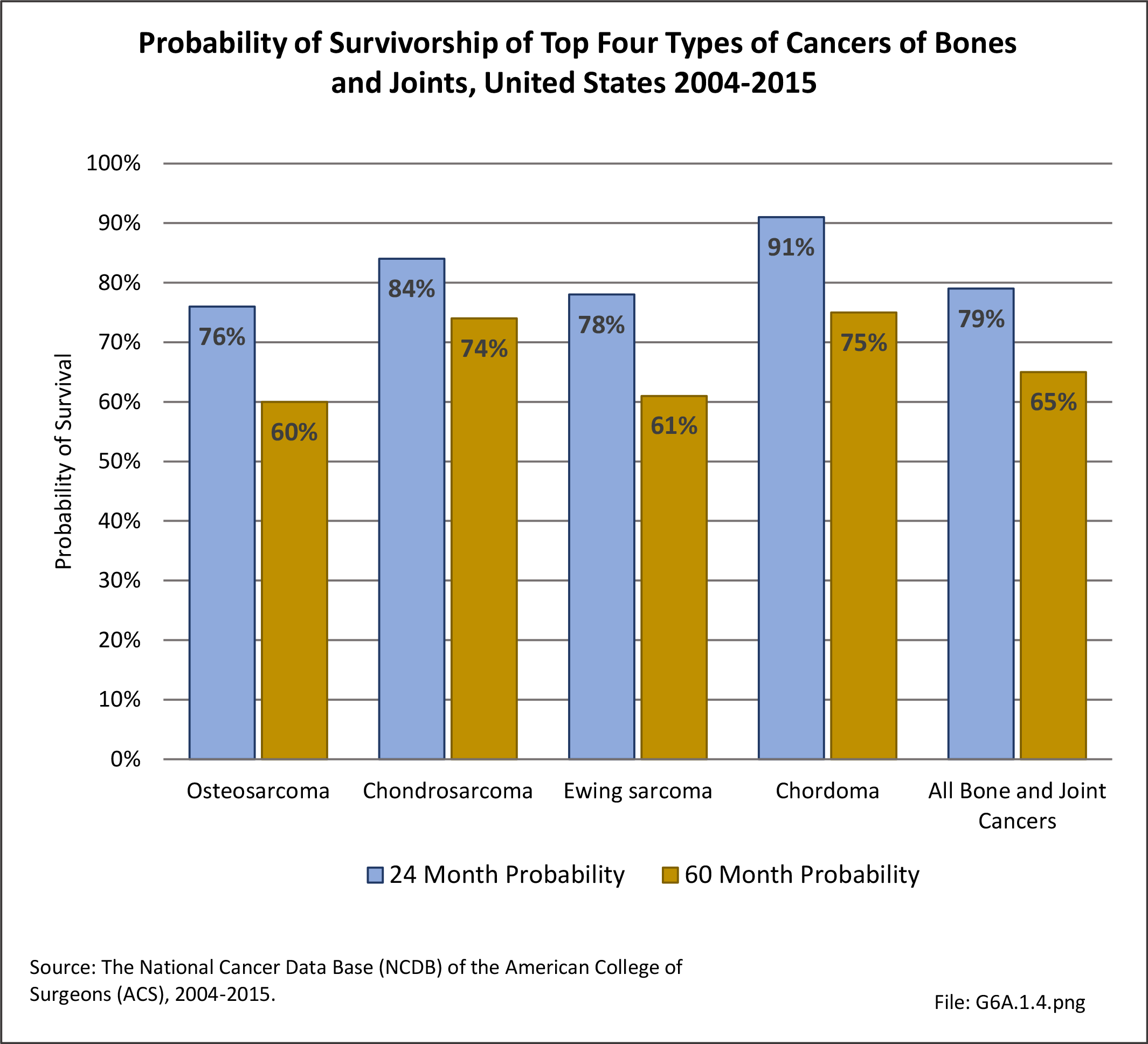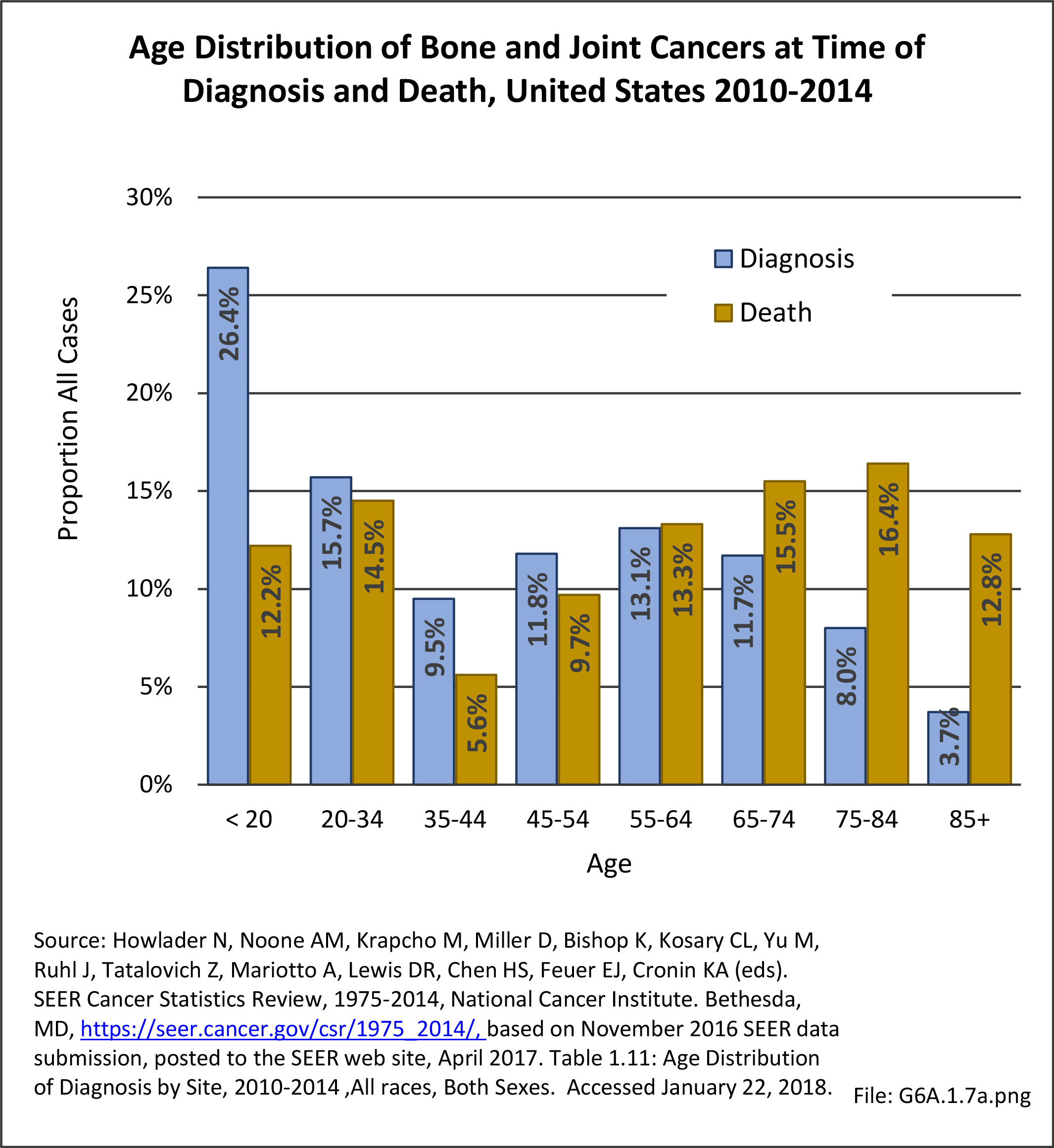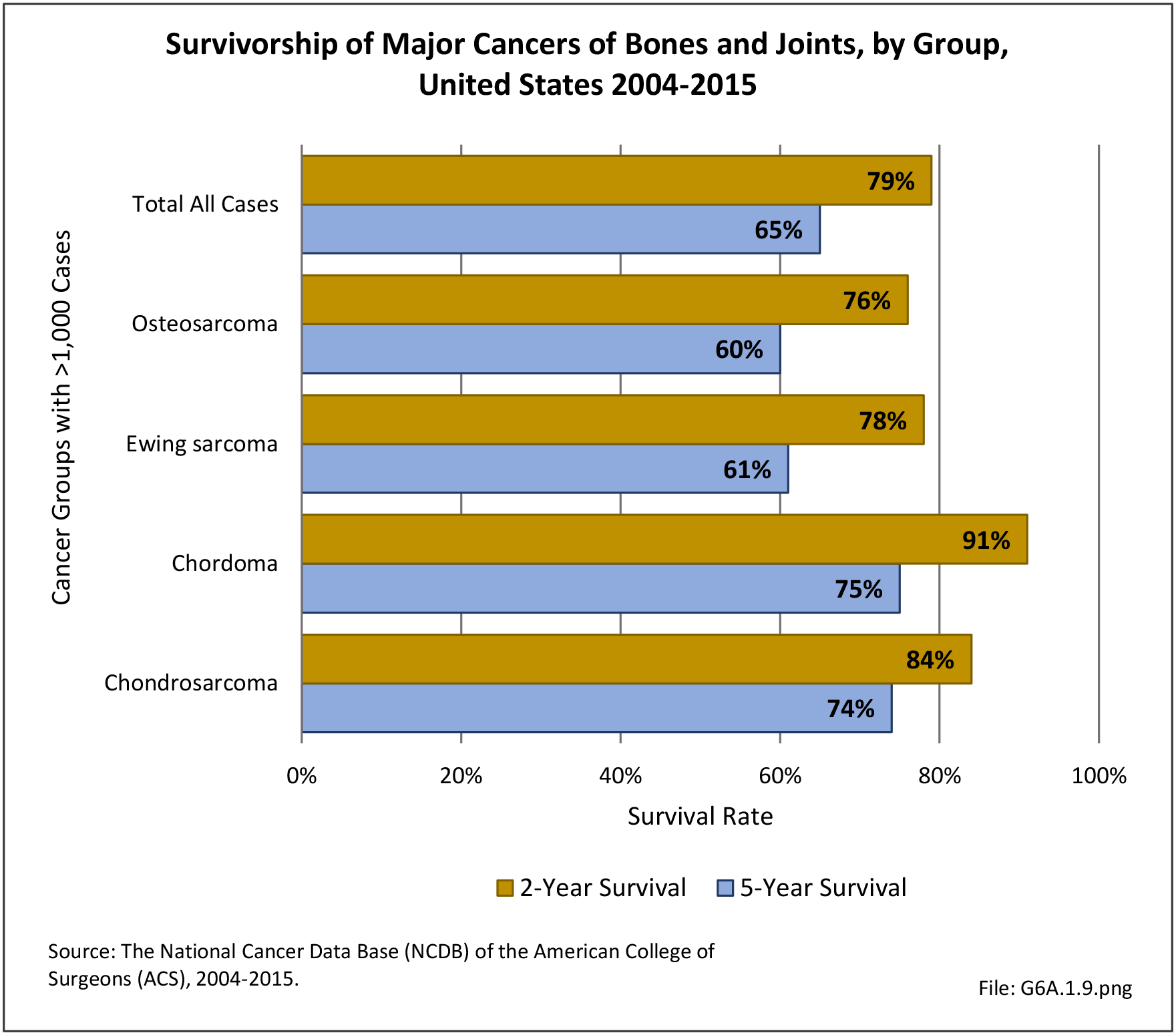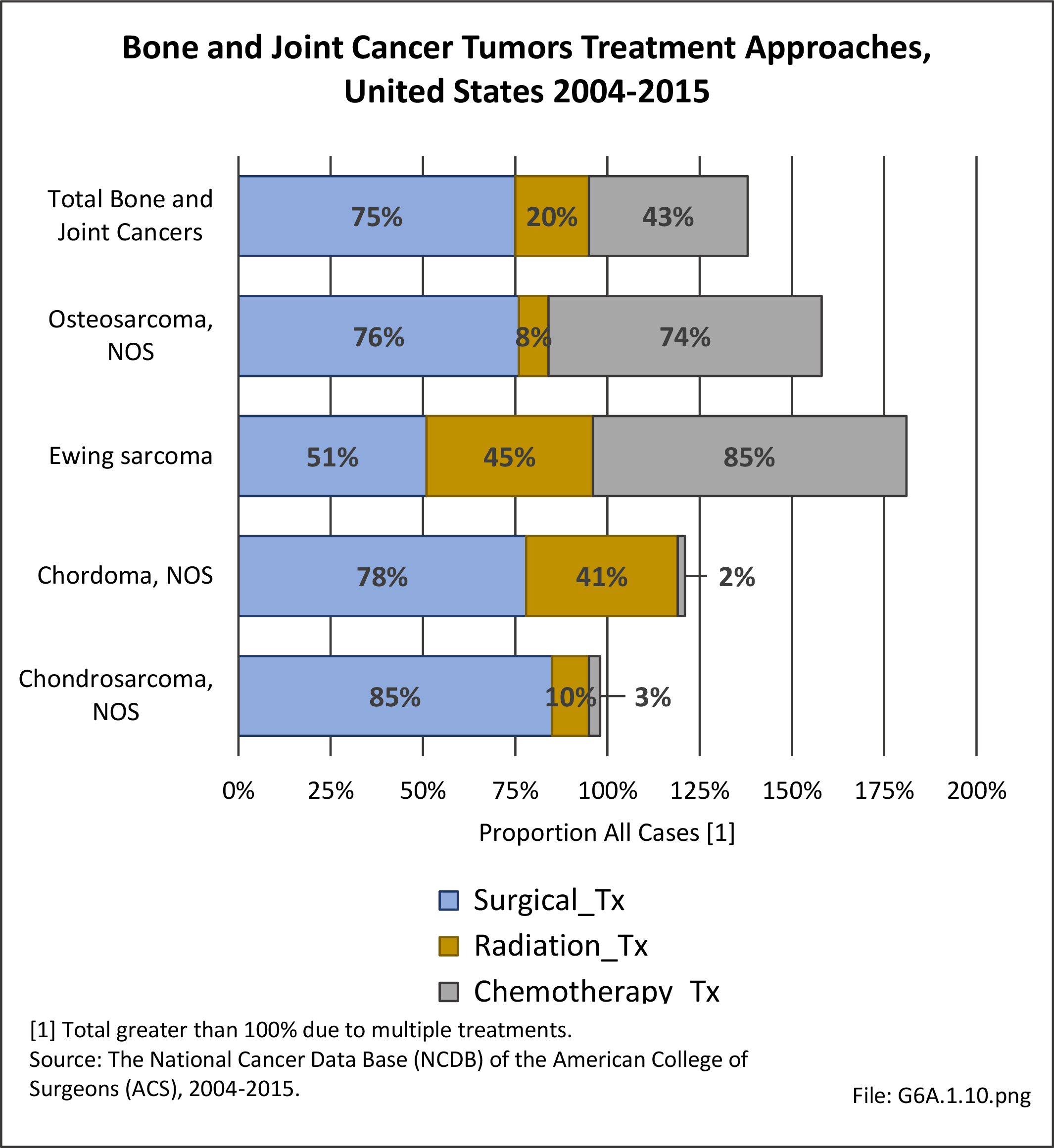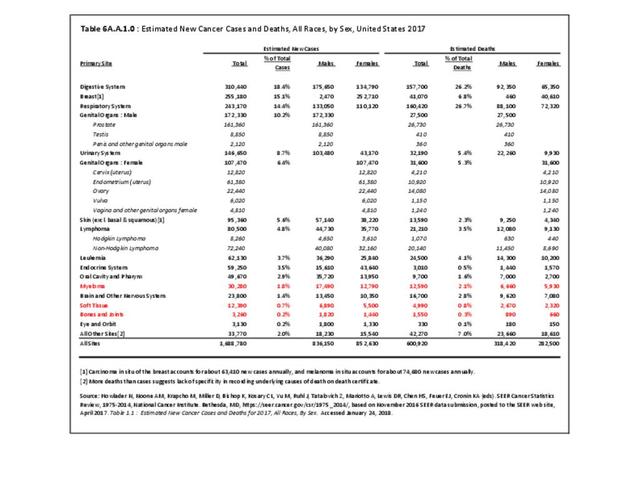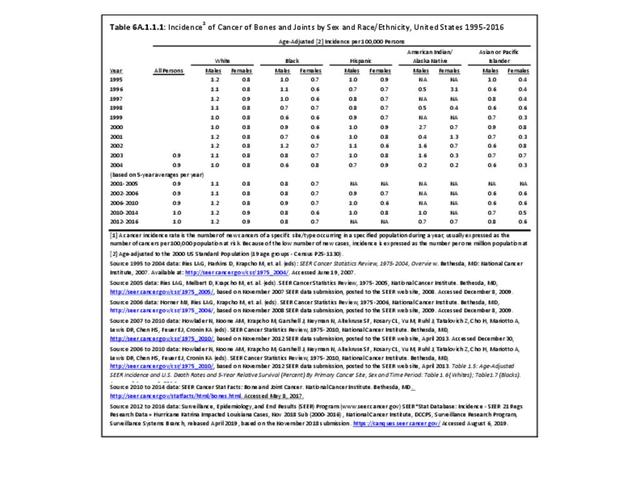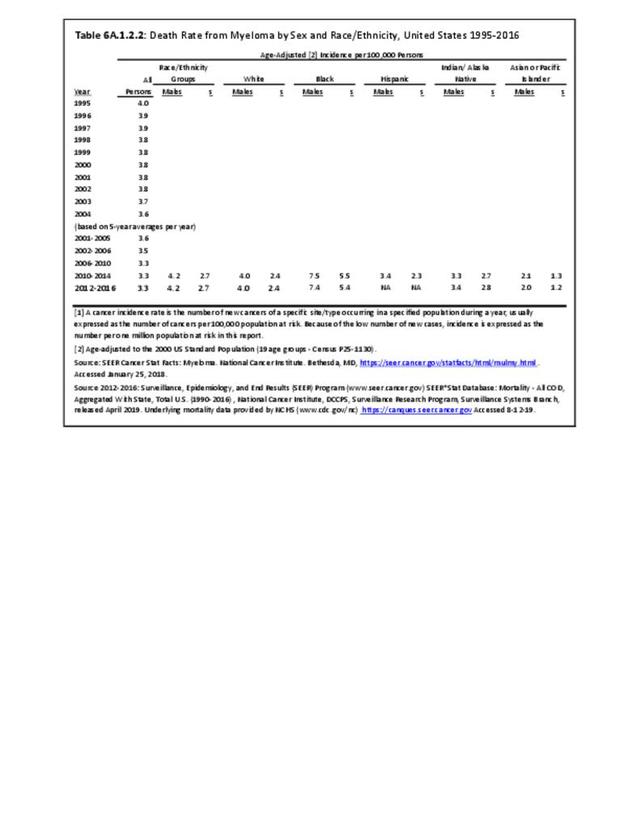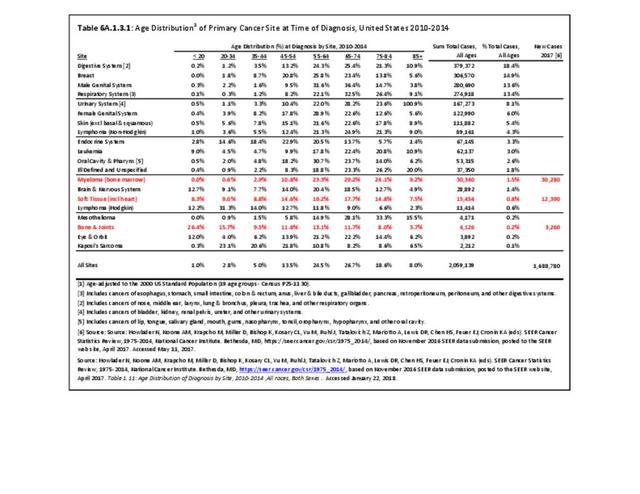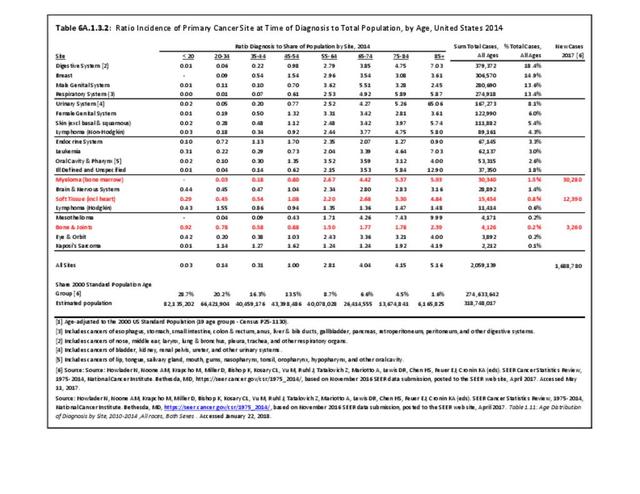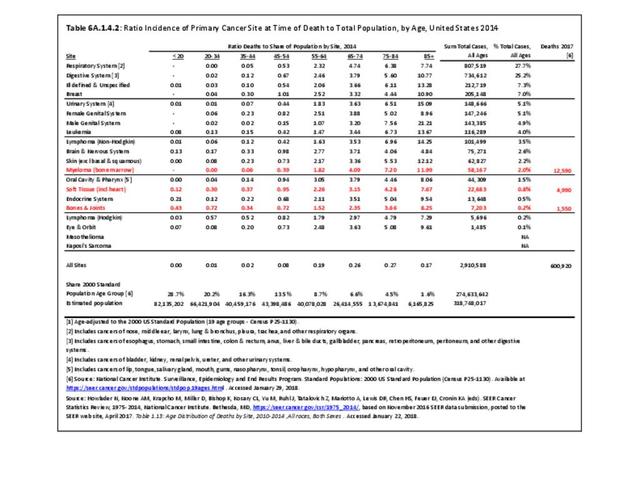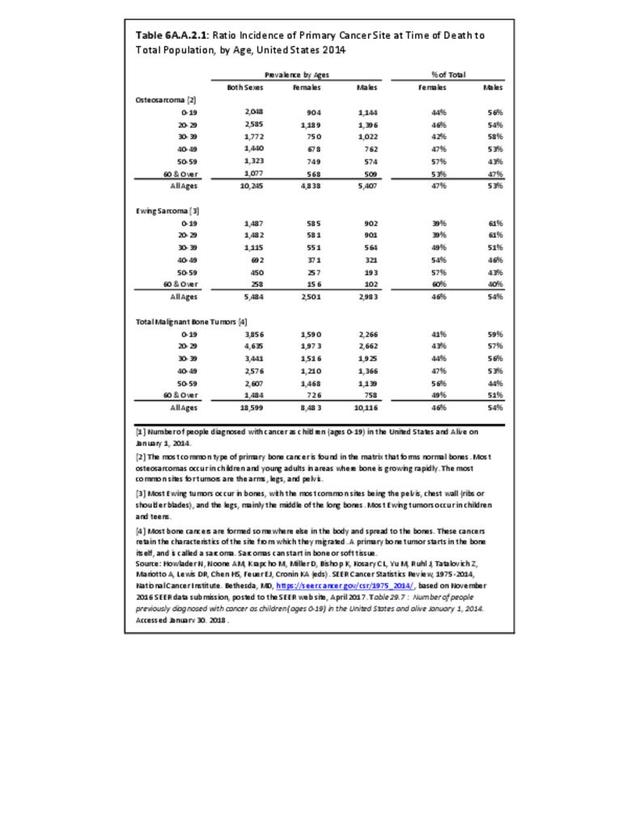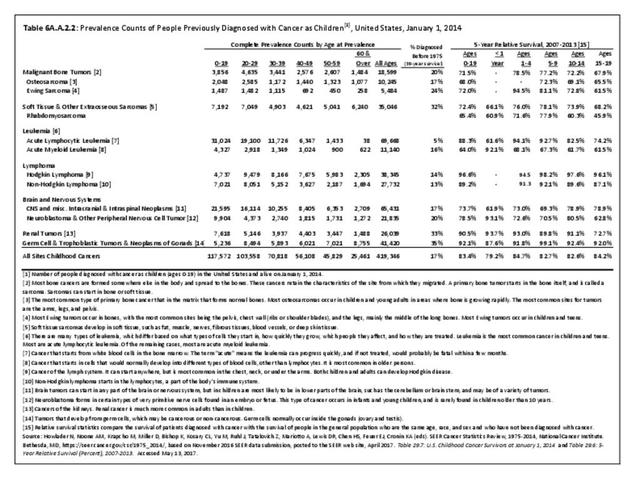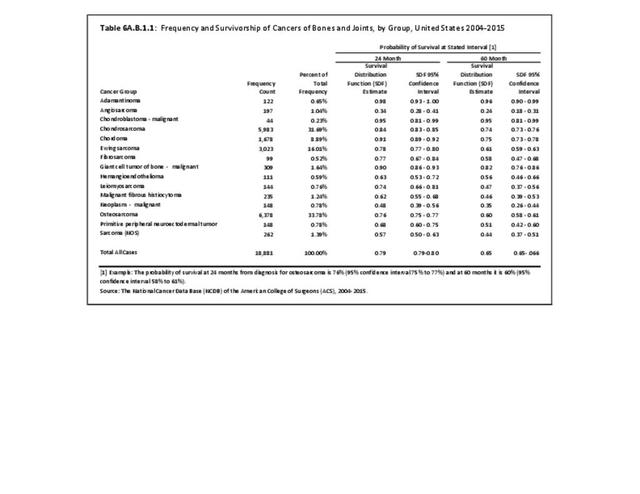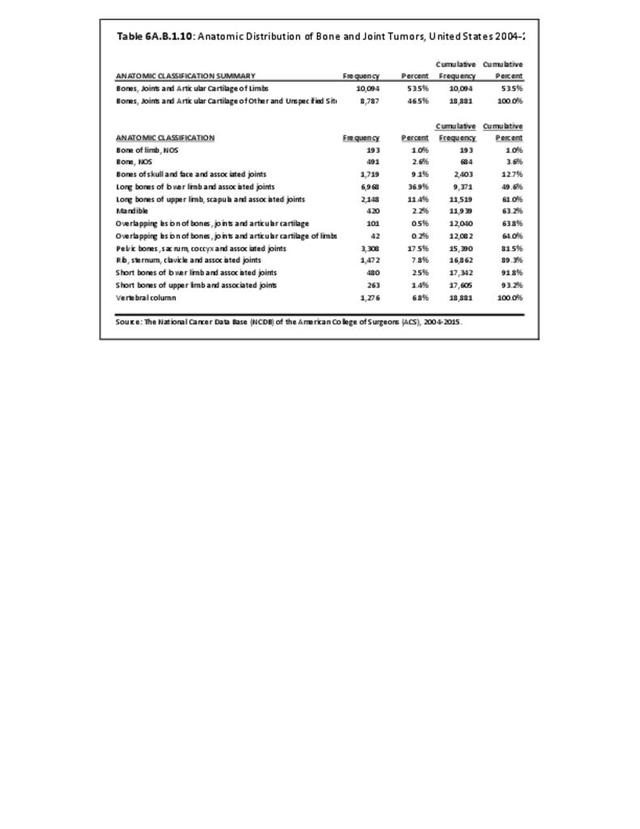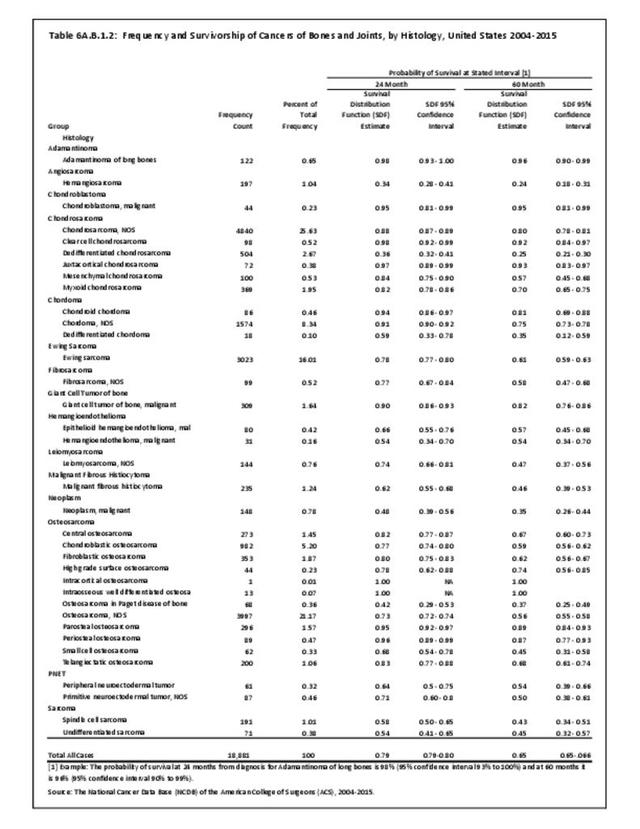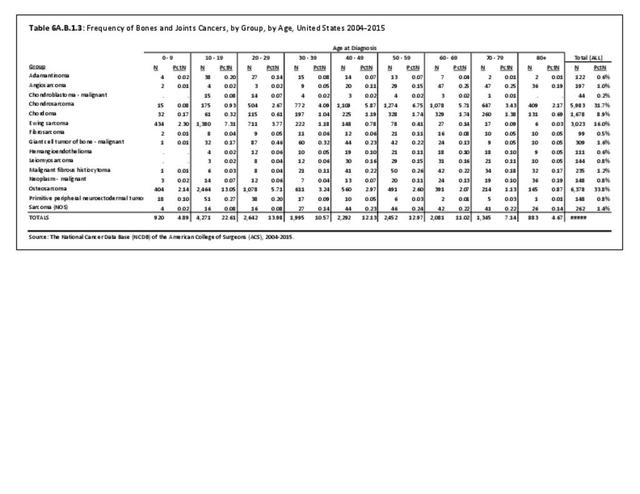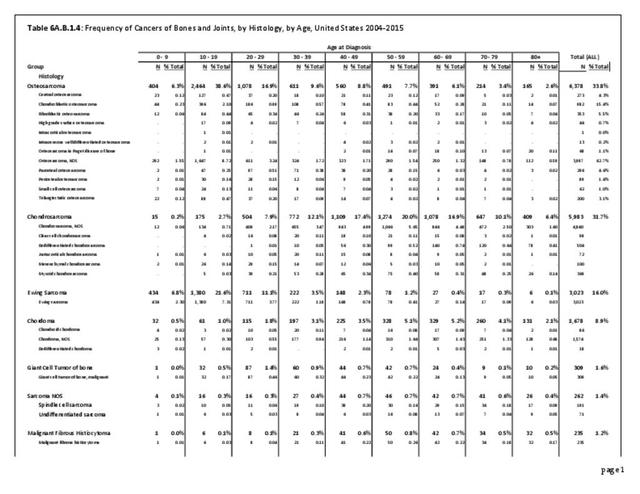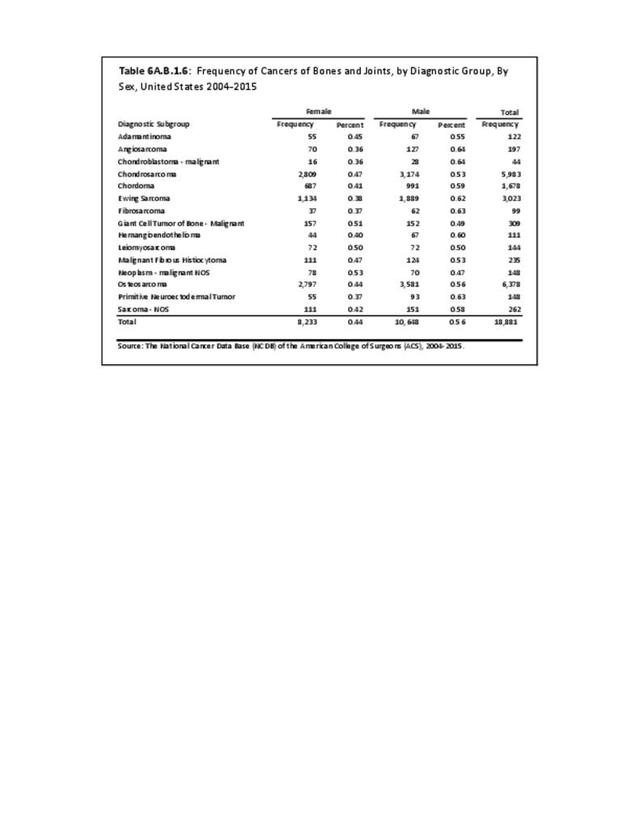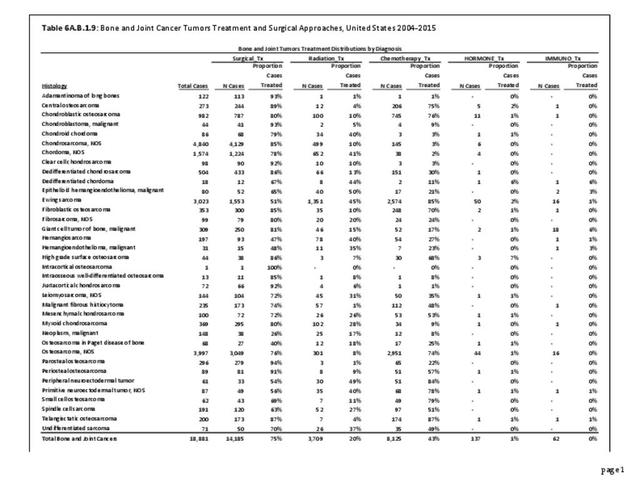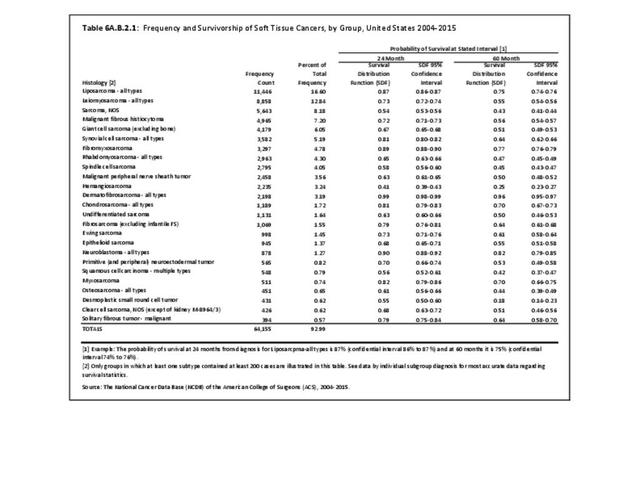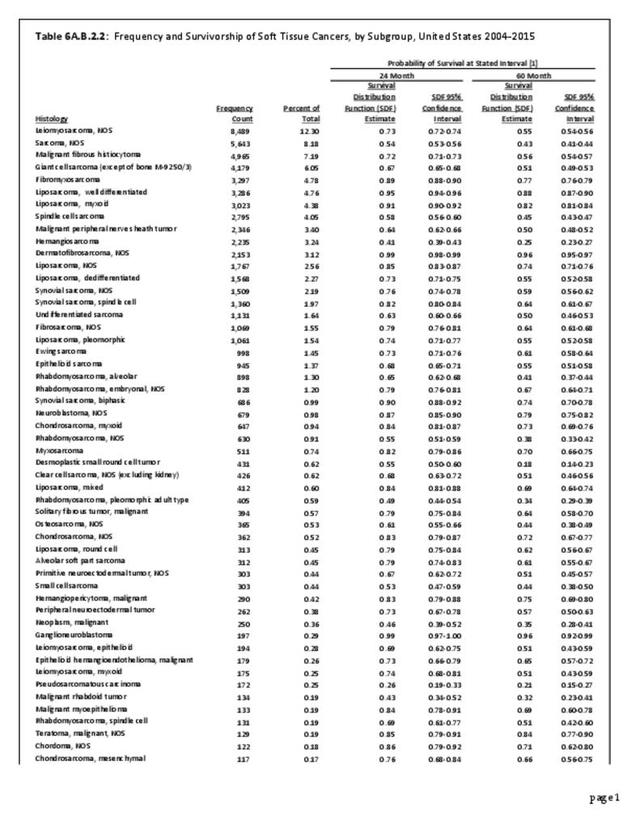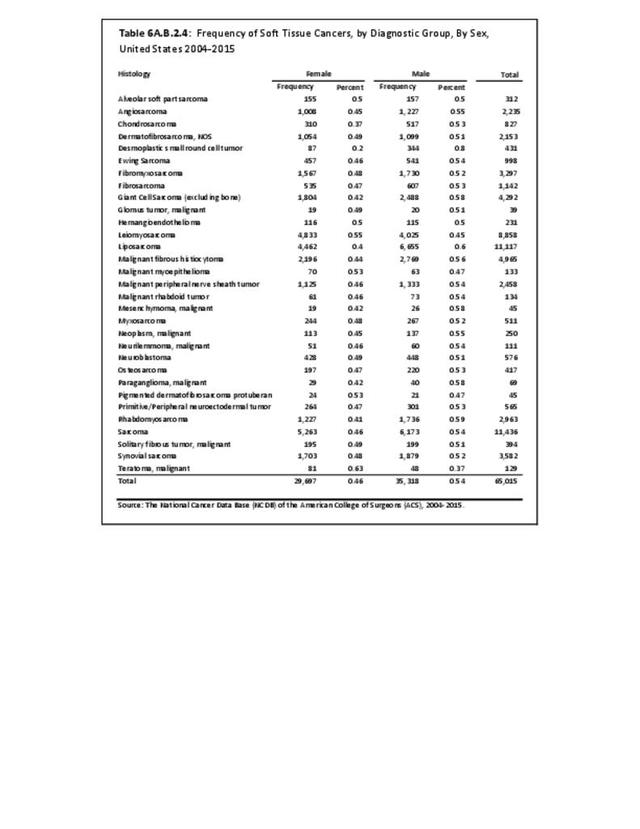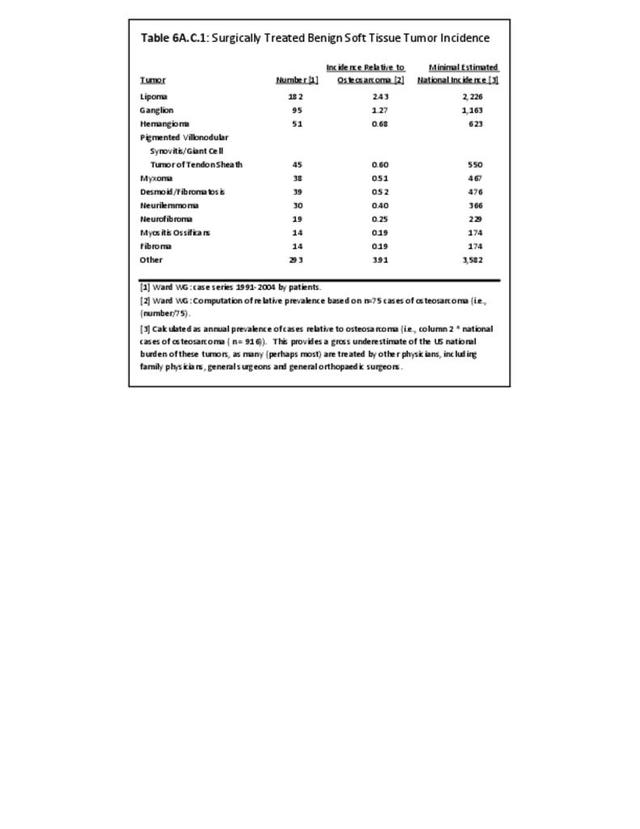Osteochondroma
The most commonly encountered benign tumor of bone is osteochondroma, which typically arises near the long ends of bones. Osteochondromas are often painful because of formation of bursae (small fluid-filled sac) overlying the lesion and/or tenting and irritation of overlying soft tissues. They can cause interference with neurovascular function due to tenting of such structures over the osteochondroma surface, and they have the potential for causing growth deformity in the involved and adjacent bones. Long-term complications are uncommon except for rare cases of dedifferentiation into chondrosarcoma. There is no estimate of the number of patients seen with nonoperatively managed osteochondromas due to lack of records. An annual US prevalence of >1,500 surgical cases is based on records kept by Dr. Ward; this is believed to be clearly underestimated. This estimate would not include cases treated by general orthopedic surgeons and pediatric orthopedic surgeons, who, in addition to orthopedic oncologists, provide medical and surgical treatment of many osteochondromas.
Unicameral Bone Cysts
Unicameral bone cysts (simple bone cysts) are the second most commonly encountered benign bone lesions, with an estimated annual prevalence of more than 1,250 surgical cases. The etiology of these fluid-filled bone cysts, usually found in the growing ends of children’s long bones such as the proximal humerus or femur, is unclear. Because they never metastasize and are usually quite characteristic on radiographs, many of these are treated by other orthopedic surgeons, especially pediatric orthopedic surgeons. The true incidence, therefore, is probably significantly higher than that estimated by extrapolation from Dr. Ward's practice experience. These cystic lesions cause weakening of the bone and the patients may require multiple surgeries to rebuild the bone with bone grafts, injections, and other techniques. They occur in children, and typically recur multiple times until skeletal maturity is achieved.
Giant Cell Tumor of Bone
Giant cell tumor of bone, with an estimated annual prevalence of more than 750 cases, is the third most commonly encountered benign bone neoplasm and accounts for significant disability and dysfunction. This typically occurs near the end of the long bones, most commonly the lower femur or upper tibia, and causes destruction of the bone. The tumor may extend through the cortex of the bone into the soft tissues and, if large enough prior to treatment, can be associated with pathologic fracture of the involved bone. Smaller tumors can be treated with bone resection and reconstruction with bone grafts or cement filler. Cases that are more complicated require sophisticated reconstruction with massive joint replacements and/or massive allografts which can cause severe long-term disability. On rare occasions, giant cell tumors metastasize to the lungs. In such cases, they typically respond poorly to chemotherapy and may cause death. These tumors are rarely treated by general orthopedic surgeons. Although currently not considered the standard of care, many patients' tumors have had excellent responses to denosumab treatment, a monoclonal antibody directed against RANK ligand, the activator of osteoclasts (giant cells). This is very similar to the mechanism of action of bisphosphonates. Initial studies with denosumab have shown a very favorable response in many tumors so treated but presently, even with denosumab pretreatment, surgical resection appears to be ultimately required. Current research continues and with enhanced understanding of the underlying pathogenic mechanisms, nonsurgical management may become possible in the future.
Enchondroma
A fourth commonly encountered tumor that may require surgery is enchondroma, estimated at more than 725 annual surgical cases. Bones typically form as cartilage during the embryo stage of human development, and this cartilage model ultimately converts into bone structure. The cartilage-based growth plates add length to the bones from bone growth. Enchondromas are tumors derived from remnants of these cartilaginous tissues that abnormally remain in the skeleton as remnants or nodules from the normal pattern of maturation and development. If these achieve sufficient size, they can cause cortical bone erosion and pain or fracture and may present diagnostic challenges requiring biopsy. They often require treatment by curettage and bone grafting. These lesions can dedifferentiate into malignant cartilage tumors called chondrosarcomas. Many small enchondromas are seen incidentally, cause no symptoms, and are treated with simple observation, thus, total incidence of enchondromas is much higher than calculated from extrapolation of the surgical data. In addition, the burden of enchondromas requiring surgical treatment is very conservatively estimated, as many are treated by general orthopedic surgeons, pediatric orthopedic surgeons, and hand surgeons.
Other Benign Bone Tumors
Multiple other benign tumors are commonly encountered.
• Aneurysmal/ bone cysts (ABCs) are aggressive cystic lesions similar to unicameral bone cysts. However, ABCs are more destructive, expanding and weakening the bone and causing greater bone destruction. They tend to fill with blood and tissue, not simple fluid. Usually, ABCs respond favorably to curettage and bone grafting, but recur in at least 20% of cases. Some ABCs arise secondarily in other bone lesions and conditions such as fibrous dysplasia.
• Metaphyseal fibrous defects (non-ossifying fibromas) are focal defects in normal bone that are filled with soft tissue. These occur in 2% to 3% of children. Most resolve without ever causing symptoms and may never be detected unless the child receives an X-ray or MRI scan for another problem. Large ones may require surgery, such as bone grafting to prevent fracture and for surgery to treat completed fractures that have already occurred.
• Osteoid osteoma is a small tumor typically occurring in children that is associated with severe, unrelenting night pain. It usually requires resection or radio frequency ablation and occasionally may require bone grafting. When located in the spine, it can cause a painful scoliosis. Recently, successful treatment with radio frequency ablation under radiographic guidance has become the treatment of choice for accessible lesions.
• Chondroblastoma is an unusual neoplasm that occurs in the ends of growing bones in teenagers and young adults. This requires resection of the lesion and bone grafting. If untreated, it can cause collapse and degenerative arthritis in the associated joint and, on rare occasion, can metastasize to the lung. Chondroblastomas are usually referred to orthopedic oncologists.
• Numerous other less common benign bone tumors often are treated similarly to giant cell tumors, ABCs, or chondroblastomas with curettage, resection, and bone grafting. Most cause some degree of disability and dysfunction of the involved extremity.
Edition:
- Fourth Edition

